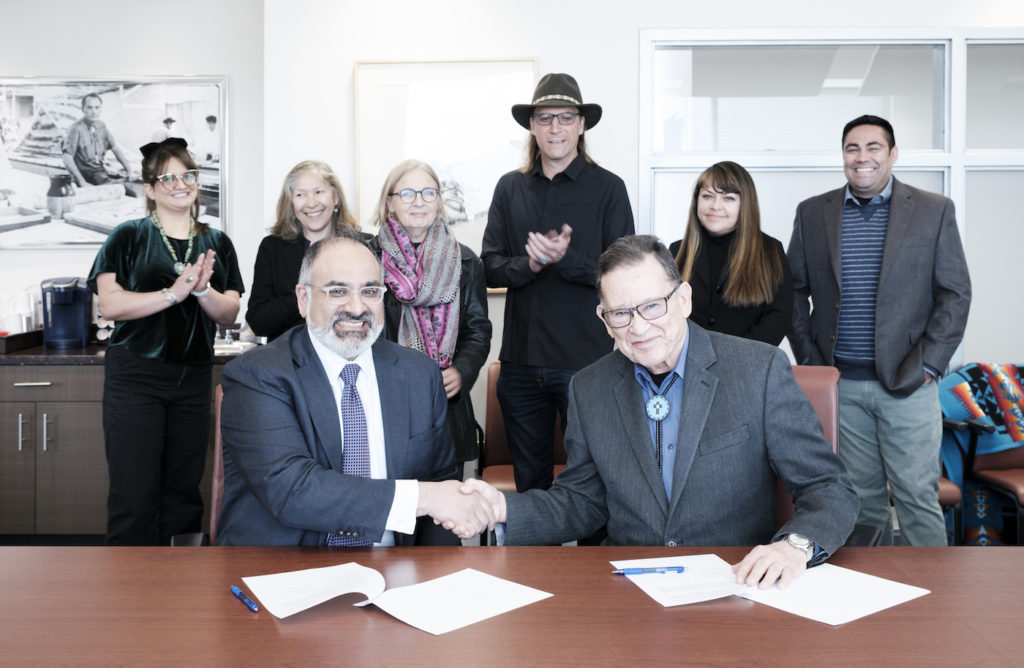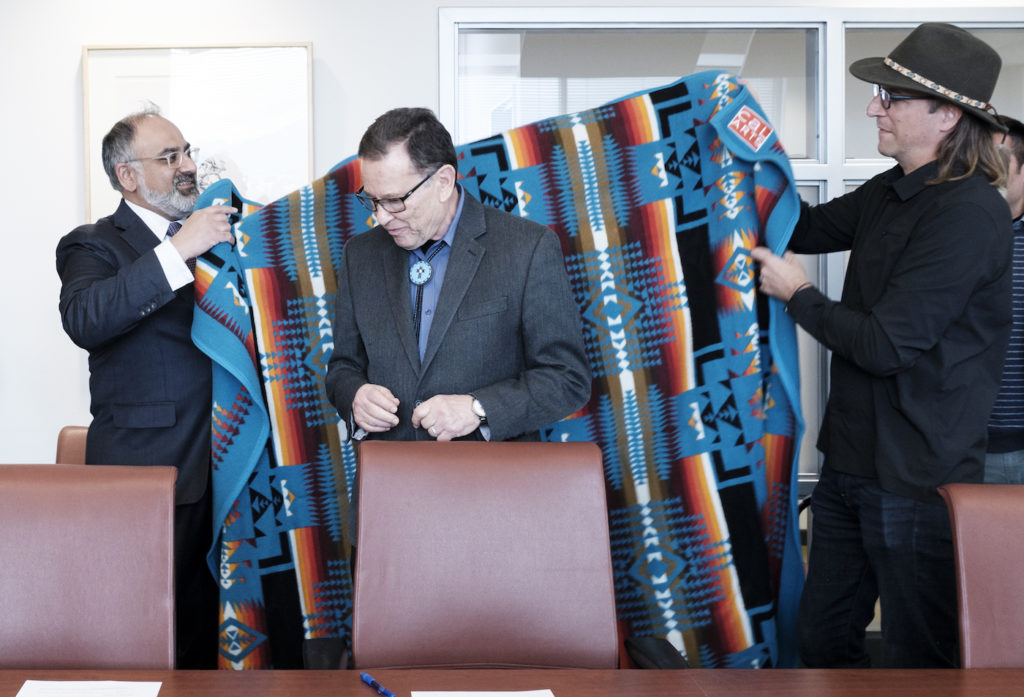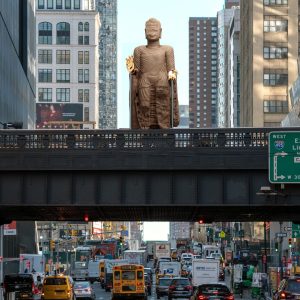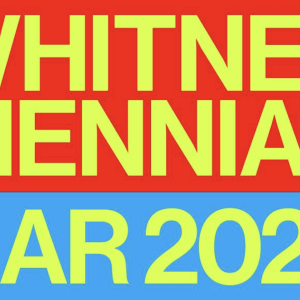CalArts and the Institute of American Indian Arts (IAIA) in Santa Fe, New Mexico, have formed a new partnership to explore possible collaborations and ways to influence each other through student and faculty exchanges and programming.
IAIA, the only college in the world dedicated to the study of contemporary Native American and Alaska Native arts, has a mission “to empower creativity and leadership in Indigenous Arts and cultures through higher education, lifelong learning, and outreach.”
CalArts President Ravi Rajan believes the missions of both schools are complementary and their shared goals can form a strong foundation for mutual growth and exchange. “IAIA’s mission is something that’s very, very important,” he says. “It stands to amplify Indigenous voices within the space of arts and culture through contemporary practice, and that’s conspicuously absent in the space of contemporary culture in the United States.”
As CalArts enters its 51st year, the Institute seeks to diversify its student body, staff, faculty, and curriculum by building collaborations and sharing resources with Indigenous artists, educators, nations, and institutions like IAIA.
“CalArts is at the beginning of a process of Indigenization, and we’re looking to IAIA for how to best approach that,” says Dr. Chad Hamill (Spokan), CalArts President’s Fellow for Indigenous Arts and Expression. While IAIA will provide guidance to CalArts in its Indigenization efforts, CalArts will offer IAIA students accessibility to cutting-edge and experimental art-making technologies. The school has deep ties to animation and film studios, theatrical and music industries, and experience-design companies.
IAIA Academic Dean Felipe Colón (Laguna Pueblo) explains the history that led to this partnership saying, “As a school that has been in existence for 60 years, IAIA has built connections with many institutions interested in Indigenous arts and artists. IAIA has long had informal community connections with CalArts through our students, alumni, and faculty. Through this partnership, we will build a reciprocal and collaborative relationship for the future.”
Potential areas for cooperation between may include Cinematic Arts and Technology, Creative Writing, and Museum Studies. Early ideas involve joint educational collaborations, public engagements (e.g., performances, seminars, symposia, and conferences), and exchanges between faculty and students.
For now, the agreement is in its exploratory stages. President Rajan and IAIA President Dr. Robert Martin agree that the structure of the partnership should form organically in response to the needs and desires of both communities. “If we force some issue here, it isn’t likely to last,” says Rajan. “This is something we want to establish and make sure it stays for a long time.”
—With thanks to Jason S. Ordaz, director of communications, Institute of American Indian Arts







